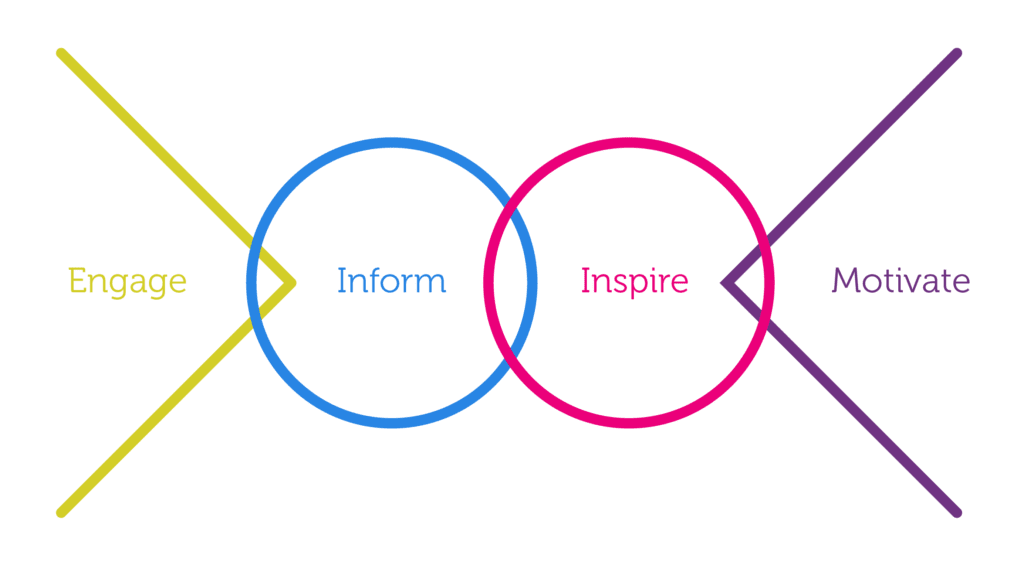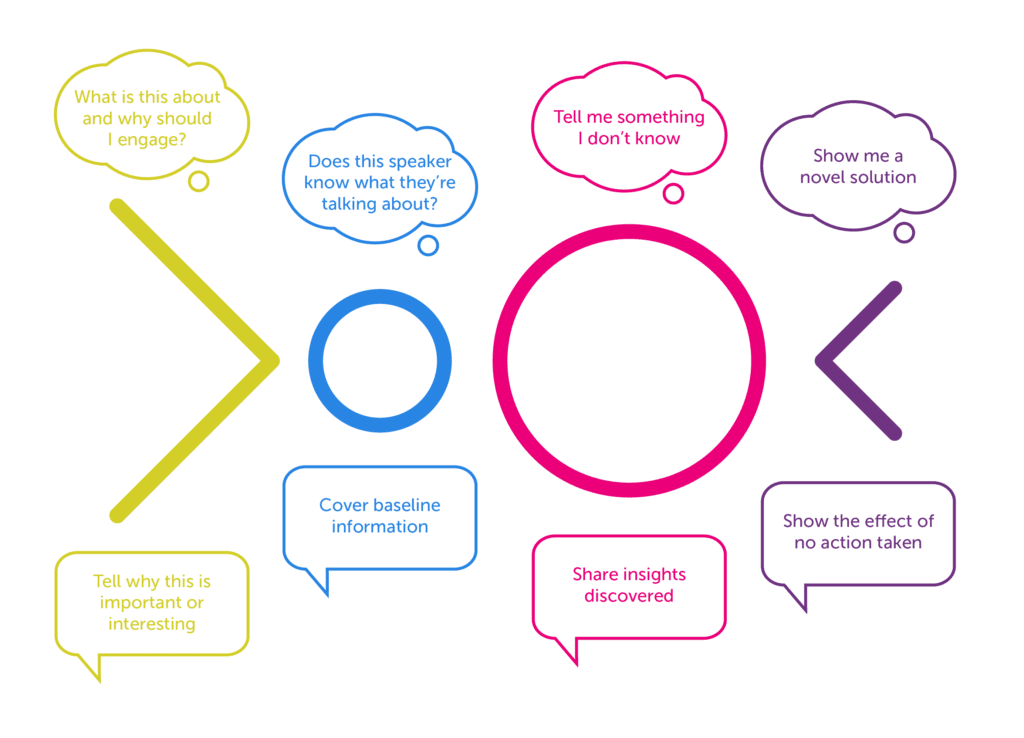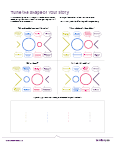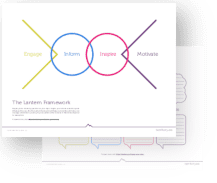Shape your message
Maybe you’re driven by passion for your topic. Maybe you’ve been asked to speak. Whatever the case, this article outlines some tools that will help you to define and hone your message and deliver an experience to your audience that resolves in them knowing how to take action.
Thursday, February 14, 2019
Article 2 in the 3-part series Craft Your Story
Make it feel personal
You’re in the conference room sitting, once again, in that broken chair—you know, the brown one with the stain—surrounded by your coworkers. Your eyes are brutalized by a nauseating cocktail of overhead fluorescent light and corporate slides blasted into your skull by that noisy old projector. What’s even worse is the monotony of Kevin’s word-by-word read-through of microscopic tabled data, a seemingly endless number of bullet points, and . . . yep . . . there it is . . . the same pie chart from last week.
We’ve all been there.
Boredom is a cultural problem and there’s really only one cure—engagement. Engaging with people you know is pretty easy: you know someone, what they do, maybe even the name of their partner or kids, and possibly even their hobbies. This all changes when you need to speak to someone or a group of somebodies, you don’t really know.
Going into a talk without knowing who you’re speaking to can make your audience feel blindsided and confused, even misunderstood and patronized, or, worse yet, misrepresented and resentful.
Presentations go poorly when the presenter doesn’t take the time to personalize their message to their audience. Going into a talk without knowing who you’re speaking to can make your audience feel blindsided and confused, even misunderstood and patronized, or, worse yet, misrepresented and resentful.
Find ways to transform lectures into an ongoing dialogue. While it’s not always possible to interact in real-time with your audience, you should put your A-game into understanding how they’ll receive your message.
Cast light on the path forward
Unless you’re making an announcement, dropping surprises on your audience doesn’t usually yield positive results. As a communicator, your job is to lead and guide. When you shape your message in a manner that’s easy to understand and bring your audience along with your thinking, you’ll create clarity, curiosity, and a willingness to support.

Like a physical beacon, the lantern framework will help you create a glow that attracts interest, shines a light upon your topic, and casts a beam showing the path forward. Use the Lantern as a linear empathy map to gather assertions about your audience and overlay your message for the best impact.
How to use the four acts
The Lantern contains four specific and linear steps or, “acts.” You do these four things, in order, in every talk. Here are some tips on how to frame your content.

1. Engage: Pull your audience in by painting a picture that they can relate to and visualize themselves in.
Ask yourself:
- Why are they here? Did they choose to come, or were they required to attend?
- How can I make this content immediately relevant and accessible to these people?
Tell them:
- Why you’re speaking so they see your motives
- Something novel you’ve discovered
- Evocative points to pique their interest
2. Inform: Work to reach a common understanding by setting a baseline, then highlighting data they may not yet have.
Ask yourself:
- What do they know already?
- What’s important to them?
- What do they need to know to understand a need for change?
Tell them:
- Accepted common knowledge
- Points that may be of interest to them
- The problems you can see, and whether they’re simply hurdles to jump or more difficult obstacles to overcome
- Opportunities to exploit
- Constraints and drivers
3. Inspire: Illustrate potential solutions.
Link ideas and concepts to that baseline information you previously covered.
Ask yourself:
- How might I address their pains?
- How might this make their job easier?
- How might this advance their interests?
Tell them:
- A vision for a better future
- A well-described entry point to contribute
4. Motivate: Give your audience a reason to act
Do they know how to help?
- Enroll them in the effort
- Tell them specific ways to contribute
What do I need from them?
- What would they consider a fair exchange in return?
Spend your time wisely
Those are the acts, but what proportion of your total content should you place into each? Different message types and audiences may require that you weigh your content to suit your needs.
Ask yourself:
- What are they expecting to hear? and, What are they hoping to hear?
- What do you need to tell them? and, Why is this important?
- What, if anything, are you asking from them?

Chances are strong that your theme fits a formula.
In addition to the image here, I’ve created some shapes we commonly use when conducting both presentations and collaborative meetings that can be downloaded here:
Download the Common Lantern Shapes Guide

Two tools for you
1. A workshop framework: Use as an empathy map to brainstorm how your audience will experience your topic.
- Print it out and put it up on the wall or frame it up with sticky notes
- Populate each of the phases using more sticky notes
- Group common ideas
- Rearrange content until it feels correct
2. A personal worksheet: Gather your thoughts If you don’t have the space or collaborators to work a wall.
- Compile a list of audience motivations that map to your theme
- Map your topics in response
Download the Lantern Framework & Q&A Worksheet

Tips
When you’re done, take a step back and assess your work:
- Is anything crucial missing?
- What doesn’t need to be there?
- Are my concepts connected?
- What other through threads exist and are they critical?
Move, add, and remove story elements until you have a clear storyline. Now you’re ready to start filling in the details.
Be flexible
Using the right tools can help, but tools don’t do the work for you. Don’t let rigidity to the tool get in your way.
Partner-up
One is the loneliest number. Find one or two trusted collaborators and work the wall and try things out.


